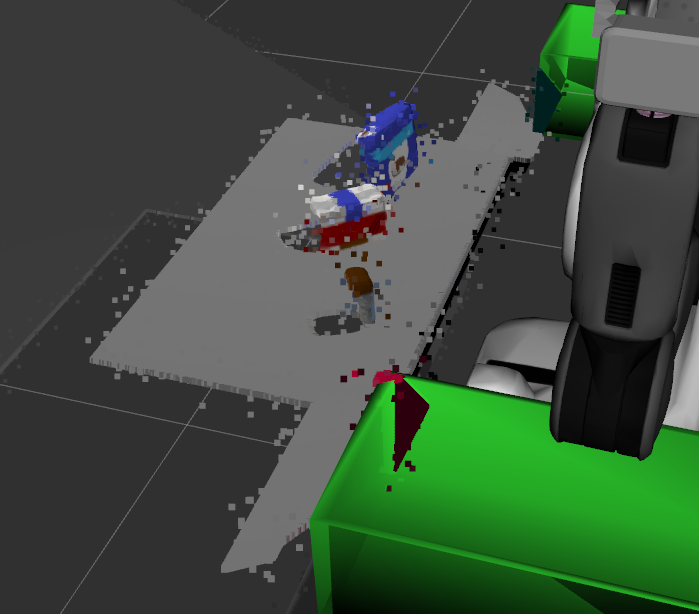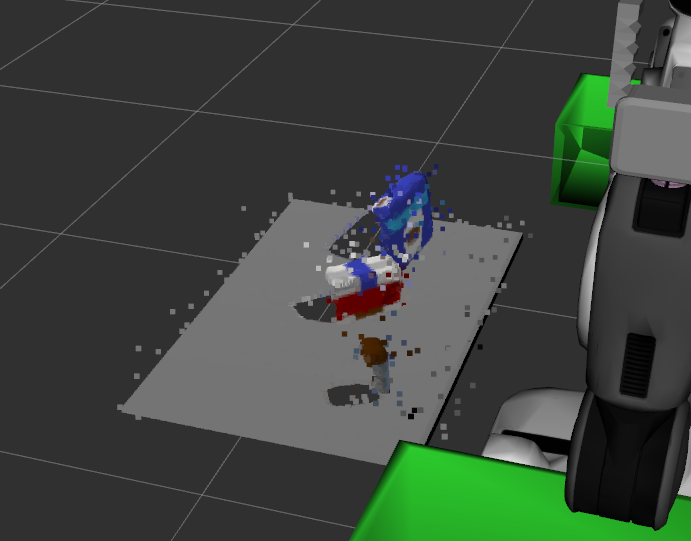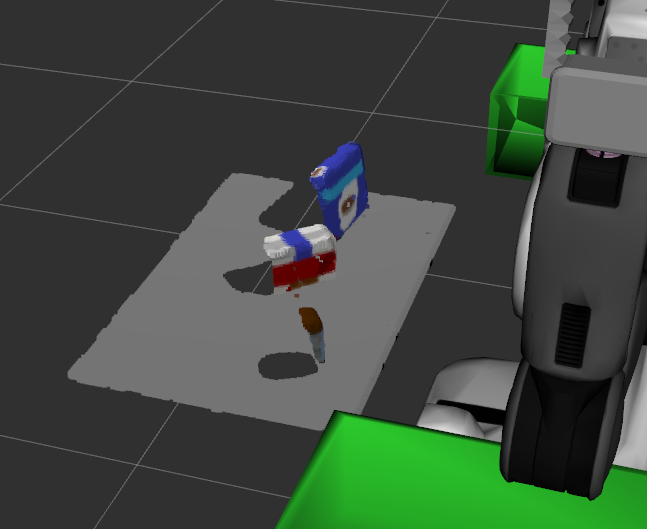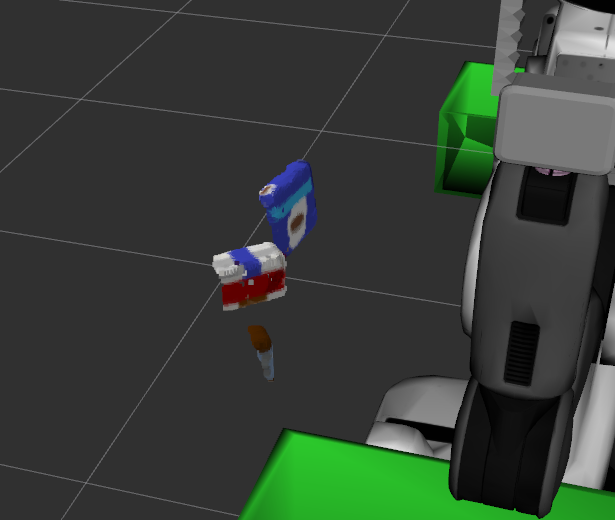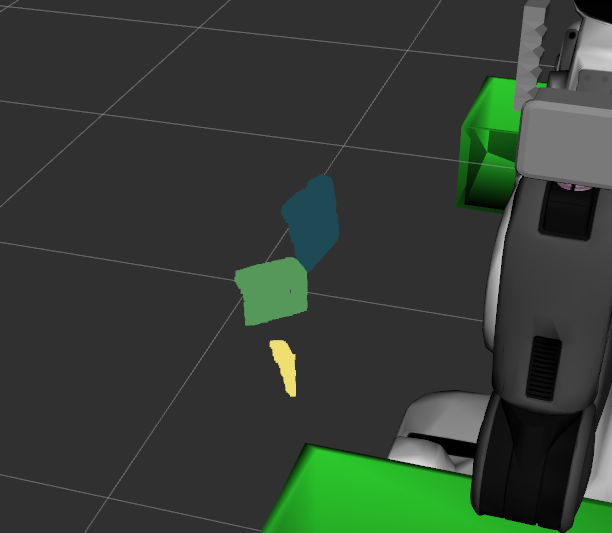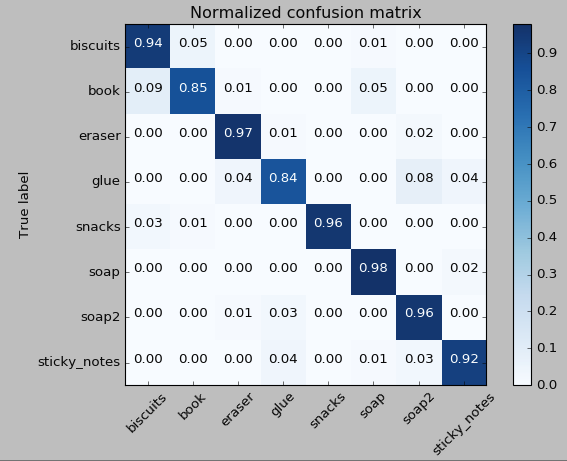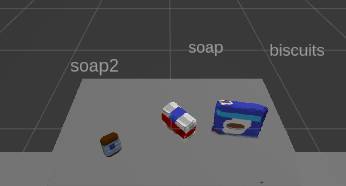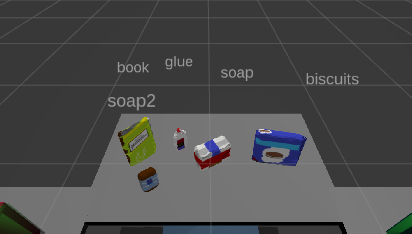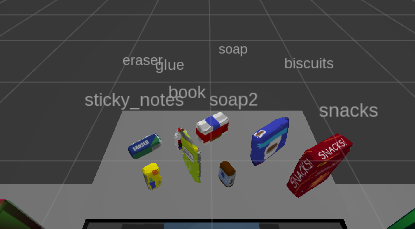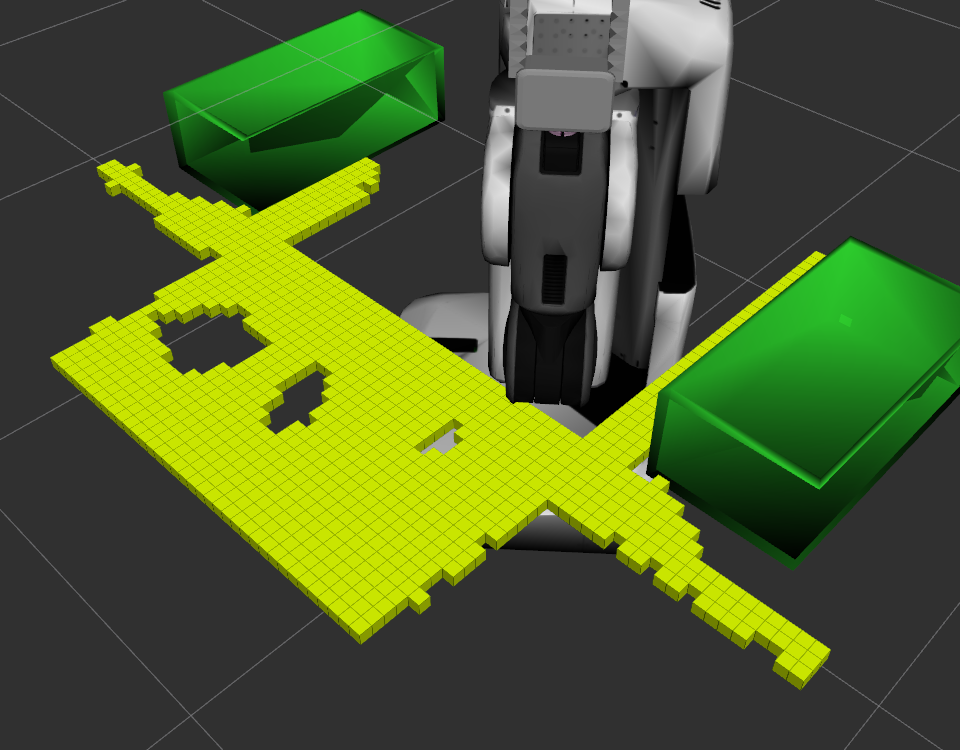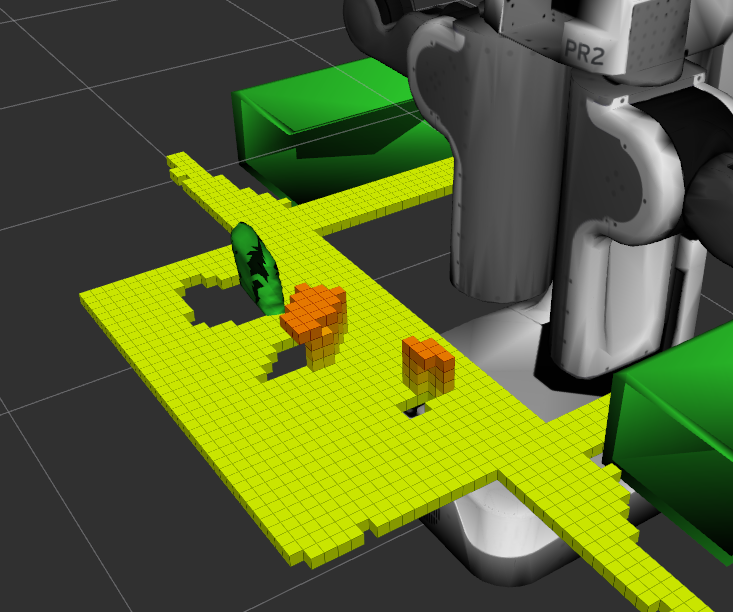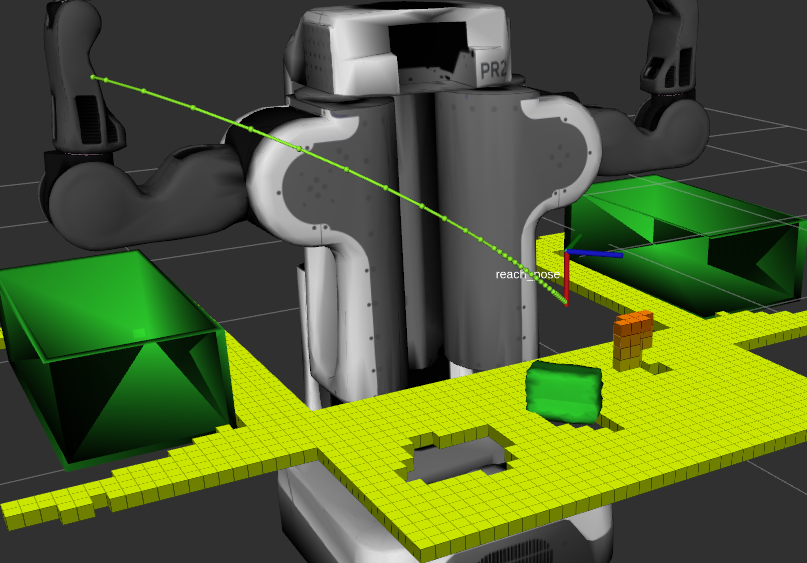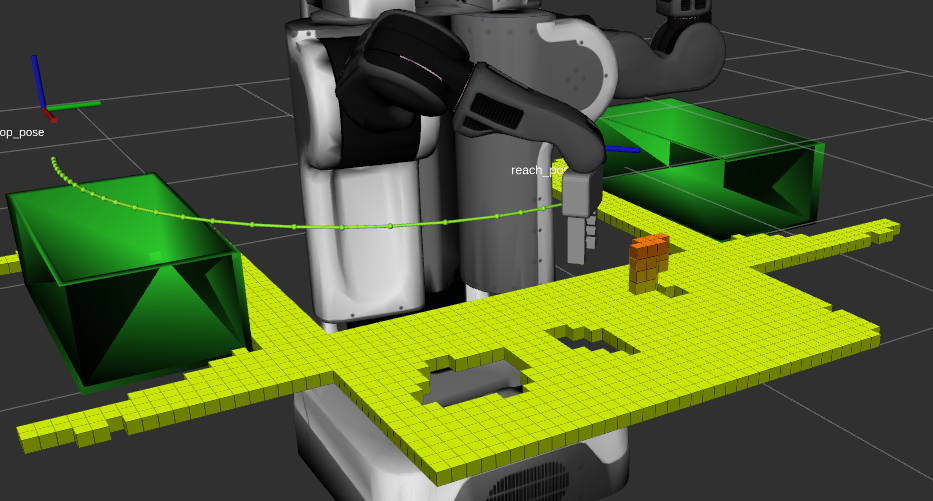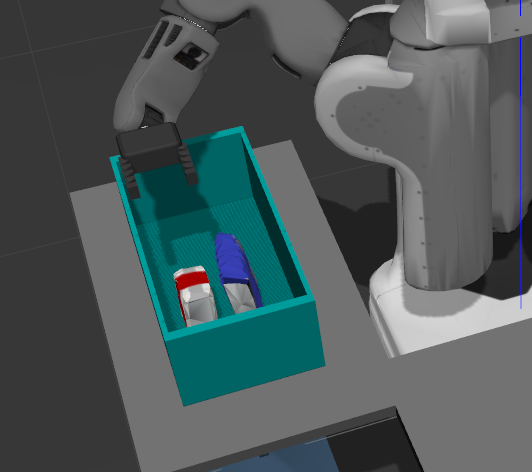Rubric Points
All point cloud processing happens in pr2_robot/scripts/object_recognition.py.
First the depth is downsampled (leaf size of 0.005), to reduce the processing load. Next two simple passthrough filters (0.6 < z < 0.8 and -0.4 < y < 0.4) are applied, to restrict the attention to just the table top and the objects on it.
Finally a statistical outlier filter (50 neighbours, 0.001 std deviation multiplier) is applied to get rid of speckle noise.
To identify the table top, and seperate it from the objects, a plane is fit to the cloud using RANSAC. Points within the fitted plane are assumed to come from the table top. Points not in the plane are assumed to come from objects.
To segment the point cloud into individual objects, Euclidean clustering is applied with a tolerance of 0.05.
The features used fall into 4 groups:
- Histogram of HSV colour values (32 bins)
- Histogram of c1c2c3 colour values (32 bins)
- Histogram of surface normals (12 bins)
- Cluster sizes (x, y and z lengths)
The c1c2c3 colour space is described here and reviewed here.
All feature calculations happen in pr2_robot/scripts/features.py.
An SVM classifier with a linear kernel was trained using 100 clouds from each object (at random orientations for each cloud), achieving an average cross-validation accuracy of 0.93 across 5 folds.
Before the pick and place can begin the robot needs to map out its surrounds. First it looks left, then right, then finally straight ahead to examine the objects.
Movement is achieved by publishing angles to "/pr2/world_joint_controller/command" and the current robot direction is monitored with tf.TransformListener().lookupTransform("/world", "/base_footprint", rospy.Time(0)).
To aid motion planning, a point cloud describing all obstacles is published to "/pr2/3d_map/points". While the robot is looking around, the table cloud is accumulated.
When an object is selected for pickup, all other objects are added to the collision cloud.
Objects are matched with pick/place requests. A service request is generated which includes the object name, the arm to use, the object's location and where to drop the object.
The object's location is calculated as the centroid of the associated point cloud.
All calculations happen in pr2_robot/scripts/object_recognition.py.
The drop location is somewhere above the dropbox described by the pick/place request, with minor variations between objects to stop them falling right on top of each other.
Once all objects in the requests are accounted for, we raise the roof.
The robot grasping isn't super reliable. I tweaked the PID values for the gripper to get it to pick up all the objects in the first world, but more is required for worlds 2 and 3.
I also would've liked to try the challenge world, but have too much time pressure at the moment.
